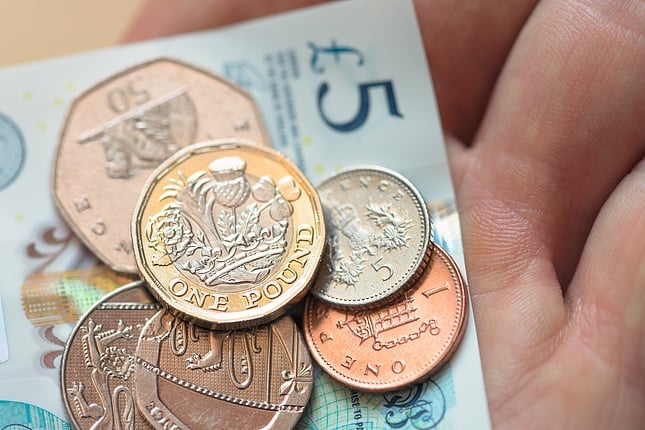- Personal Income expected to plunge 7.3% in February as stimulus fades.
- Personal Spending to fall 0.7% after increasing 2.4% in January.
- Core PCE prices forecast to be stable at 1.5% on the year in February.
- Fourth quarter GDP to be unchanged at 4.1% annualized in final revision.
- February statistics provide no new economic information or market directives.
The expected crash of Personal Income in February as the stimulus is withdrawn will be remembered as just a statistical oddity if the latest pandemic payments restore the labor market and the US economy to health.
Personal income, a category that includes all sources, is forecast to drop 7.3% in February after soaring 10% in January on the second stimulus relief bill passed by Congress and signed by President Trump in December.
Personal Spending is predicted to slip 0.7% in February following a 2.4% increase in January.
The Core Personal Consumption Expenditure Price Index is projected to be unchanged at 1.5% on the year in February.
Fourth quarter US economic growth will be 4.1% annualized after the final revision to GDP from the Bureau of Economic Analysis, a division of the US Commerce Department.
Income, Retail Sales and Spending
February will end being a pause between the stimulus driven income and spending boom of January and the stimulus and job creation recovery of March and the entire second quarter.
The modest $600 individual grants that arrived in January facilitated the largest one month gain in financial resources, excepting the lockdown recovery, in over two decades. Personal Income jumped 10% on the month.
The pandemic grants also spurred the largest spurt in Retail Sales, again barring the rebound of May and June, in almost two decades. All three categories of Sales saw large initial gains that were revised even higher two weeks later.
Personal Spending, which includes all purchases of goods and services by a household, jumped 2.4% in January, second only to the 8.7% and 6.5% increases in May and June.
In its first release January Retail Sales rose 5.3%, that jumped to 7.6% after adjustment, Sales ex Autos added 5.9% revised to 8.3%, and the Control Group, which mimics the consumption component of GDP, originally 6% became 8.7% after adjustment.
Retail Sales
The revisions, 2.3% for Sales, 2.4% for ex Autos and 2.7% for Control, reversed most of the February losses in the three groups, respectively, 3%, 2.7% and 3.5%. The February Sales results will themselves be revised by the US Census Bureau at the end of March.
Core PCE Prices
Inflation has not rebounded to its 2019 levels. The Core PCE Price Index, the Fed's elected measure of consumer price changes, has not been at the bank's 2% target since December 2019. For the year it averaged 1.7%. It was 1.9% in February 2020 before the collapse in consumer spending drove it to 0.9% in April and 1% in May. The January rate of 1.5% has been the post-lockdown high.
Low performance is not the only impediment to inflation-pressured Fed rate increases. The bank's six-month old inflation averaging policy, which assumes a period of above standard inflation to balance the weak rates of the past decade will, and is designed, to preclude any fed funds increase speculation based on rising prices. The Fed's own predictions do not see any increase until after 2023.
Core PCE Prices
Conclusion
Personal Income and Spending restate economic information already available from other sources. Core PCE Inflation is a modernized version of the Consumer Price Index and also offers no special insights to price dynamics. Its main attribute is that its reformulation produces a lower, and when adopted central bank pleasing, inflation rate. The third and final revision of GDP rarely results in any changes to the growth rate.
These four statistics provide a more detailed view of the US economy. They do not contain new information, nor will they leave any mark on the markets.
Information on these pages contains forward-looking statements that involve risks and uncertainties. Markets and instruments profiled on this page are for informational purposes only and should not in any way come across as a recommendation to buy or sell in these assets. You should do your own thorough research before making any investment decisions. FXStreet does not in any way guarantee that this information is free from mistakes, errors, or material misstatements. It also does not guarantee that this information is of a timely nature. Investing in Open Markets involves a great deal of risk, including the loss of all or a portion of your investment, as well as emotional distress. All risks, losses and costs associated with investing, including total loss of principal, are your responsibility. The views and opinions expressed in this article are those of the authors and do not necessarily reflect the official policy or position of FXStreet nor its advertisers. The author will not be held responsible for information that is found at the end of links posted on this page.
If not otherwise explicitly mentioned in the body of the article, at the time of writing, the author has no position in any stock mentioned in this article and no business relationship with any company mentioned. The author has not received compensation for writing this article, other than from FXStreet.
FXStreet and the author do not provide personalized recommendations. The author makes no representations as to the accuracy, completeness, or suitability of this information. FXStreet and the author will not be liable for any errors, omissions or any losses, injuries or damages arising from this information and its display or use. Errors and omissions excepted.
The author and FXStreet are not registered investment advisors and nothing in this article is intended to be investment advice.
Recommended Content
Editors’ Picks

EUR/USD holds on to intraday gains after upbeat US data
EUR/USD remains in positive ground on Friday, as profit-taking hit the US Dollar ahead of the weekend. Still, Powell's hawkish shift and upbeat United States data keeps the Greenback on the bullish path.

GBP/USD pressured near weekly lows
GBP/USD failed to retain UK data-inspired gains and trades near its weekly low of 1.2629 heading into the weekend. The US Dollar resumes its advance after correcting extreme overbought conditions against major rivals.

Gold stabilizes after bouncing off 100-day moving average
Gold trades little changed on Friday, holding steady in the $2,560s after making a slight recovery from the two-month lows reached on the previous day. A stronger US Dollar continues to put pressure on Gold since it is mainly priced and traded in the US currency.

Bitcoin to 100k or pullback to 78k?
Bitcoin and Ethereum showed a modest recovery on Friday following Thursday's downturn, yet momentum indicators suggest continuing the decline as signs of bull exhaustion emerge. Ripple is approaching a key resistance level, with a potential rejection likely leading to a decline ahead.

Week ahead: Preliminary November PMIs to catch the market’s attention
With the dust from the US elections slowly settling down, the week is about to reach its end and we have a look at what next week’s calendar has in store for the markets. On the monetary front, a number of policymakers from various central banks are scheduled to speak.

Best Forex Brokers with Low Spreads
VERIFIED Low spreads are crucial for reducing trading costs. Explore top Forex brokers offering competitive spreads and high leverage. Compare options for EUR/USD, GBP/USD, USD/JPY, and Gold.

